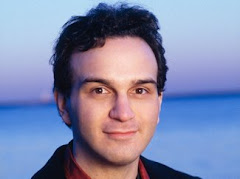Having seen Herbert Blomstedt before in Kuala Lumpur with the superb Leipzig Gewandhaus Orchestra in Mozart's Jupiter Symphony and Richard Strauss' Ein Heldenleben some years ago, it was good to catch up with the octogenarian conductor once again.
When maestro Blomstedt walked out onto the NHK Hall platform before the opening of the concert, he was greeted with a huge round of loud applause by the capacity Japanese audience which was as thunderous as I have probably heard reserved for another octogenarian before - Herbert von Karajan in the 1980s.
After the orchestra awakened in the Allegro non troppo, the NHKSO strings revved up like a powerful engine. As the timpani thundered beneath, Blomstedt with inviting gestures propelled the movement’s momentum forward. When the throbbing strings’ texture intensified, the strong double-bass section in particular roared, ensnaring the listener in their thickening tapestry.
In the Molto vivace, Blomstedt showed off his orchestra’s capacity for transparency in the fugue, which was a nice contrast to its earlier muscular display. The falling octaves and the pounding of the timpani packed a lot of punch that was nicely contrasted by the delicate string spiccatos.
In the Adagio molto e cantabile, maestro Blomstedt missed the mark ever so slightly. Blomstedt seemed to like having things at a more flowing pace, but this resulted in a slight loss of the magic that this gorgeous movement can bring. There was a good balance of sound, but I could not help feeling that things were a tad rushed with the florid first violin parts sounding more like a technical exercise than a stream of beautiful legato lines.
The final movement fared a lot better. The cello recitatives interjected by the orchestra provided drama in the beginning of this movement which was then ended by the coming of the familiar “Ode to Joy” motif. When bass Jongmin Park began, I was impressed by the power of projection that he had. His voice had a good depth in it with fine German diction.
Soprano Simona Šaturová and mezzo-soprano
Elisabeth Kulman both did very well but the tenor Joel Prieto lacked tone and
projection in his solos and was the weakest link in the vocal ensemble.
A grandly played finale brought about long and well-deserved applause as well as a standing ovation from the capacity Tokyo audience.
A grandly played finale brought about long and well-deserved applause as well as a standing ovation from the capacity Tokyo audience.





















































No comments:
Post a Comment